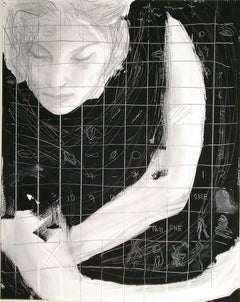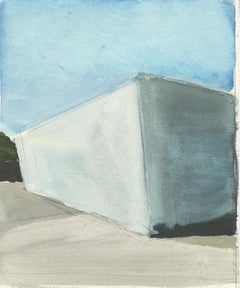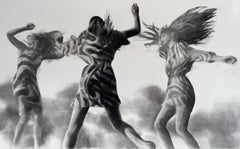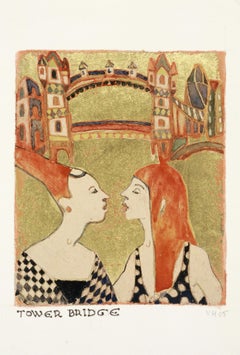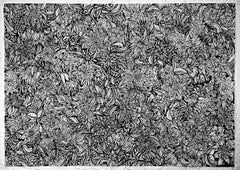New York - Landscape Drawings and Watercolors
2010s Contemporary New York - Landscape Drawings and Watercolors
Paint, Paper, Graphite
2010s Contemporary New York - Landscape Drawings and Watercolors
Watercolor, Archival Paper
2010s Realist New York - Landscape Drawings and Watercolors
Charcoal, Archival Paper, Graphite
Early 2000s Contemporary New York - Landscape Drawings and Watercolors
Gold Leaf
2010s Expressionist New York - Landscape Drawings and Watercolors
Pastel, Archival Paper
2010s New York - Landscape Drawings and Watercolors
Paper, Pen
2010s Contemporary New York - Landscape Drawings and Watercolors
Watercolor, Archival Paper
2010s American Modern New York - Landscape Drawings and Watercolors
Mixed Media, Acrylic
2010s Expressionist New York - Landscape Drawings and Watercolors
Mylar, Mixed Media
2010s American Realist New York - Landscape Drawings and Watercolors
Archival Paper
Early 2000s Abstract Geometric New York - Landscape Drawings and Watercolors
Acrylic, Archival Paper
2010s Contemporary New York - Landscape Drawings and Watercolors
Paper, Watercolor
2010s New York - Landscape Drawings and Watercolors
Porcelain, Ink, Digital
Early 2000s Abstract Geometric New York - Landscape Drawings and Watercolors
Acrylic, Archival Paper
2010s Assemblage New York - Landscape Drawings and Watercolors
Charcoal, Archival Paper, Magazine Paper
2010s Expressionist New York - Landscape Drawings and Watercolors
Pastel, Archival Paper
2010s Assemblage New York - Landscape Drawings and Watercolors
Charcoal, Archival Paper, Magazine Paper, Mixed Media
2010s New York - Landscape Drawings and Watercolors
Porcelain, Ink, Digital
1970s New York - Landscape Drawings and Watercolors
Vellum, Pencil
21st Century and Contemporary American Realist New York - Landscape Drawings and Watercolors
Graphite
1950s American Modern New York - Landscape Drawings and Watercolors
Paper, Watercolor
21st Century and Contemporary American Realist New York - Landscape Drawings and Watercolors
Watercolor
Early 20th Century Contemporary New York - Landscape Drawings and Watercolors
Paper, Crayon
Mid-20th Century American Impressionist New York - Landscape Drawings and Watercolors
Charcoal, Cardboard
21st Century and Contemporary American Impressionist New York - Landscape Drawings and Watercolors
Watercolor
1930s American Realist New York - Landscape Drawings and Watercolors
Paper, Ink, Watercolor
2010s New York - Landscape Drawings and Watercolors
Porcelain, Ink
Late 19th Century Impressionist New York - Landscape Drawings and Watercolors
Paper, Pastel
21st Century and Contemporary Abstract New York - Landscape Drawings and Watercolors
Archival Ink, Color Pencil, Watercolor
Contemporary New York - Landscape Drawings and Watercolors
Archival Paper, Graphite
1950s American Modern New York - Landscape Drawings and Watercolors
Paper, Watercolor
2010s Abstract Impressionist New York - Landscape Drawings and Watercolors
Watercolor
2010s Contemporary New York - Landscape Drawings and Watercolors
Paper, Ink, Watercolor
2010s Surrealist New York - Landscape Drawings and Watercolors
Pastel, Watercolor, Graphite
2010s Contemporary New York - Landscape Drawings and Watercolors
Ink, Color Pencil, Graphite
2010s Contemporary New York - Landscape Drawings and Watercolors
Mixed Media, Watercolor, Archival Paper, Monoprint
2010s Contemporary New York - Landscape Drawings and Watercolors
Watercolor, Archival Paper
2010s Naturalistic New York - Landscape Drawings and Watercolors
Paper, Pastel
2010s Naturalistic New York - Landscape Drawings and Watercolors
Paper, Pastel
2010s Naturalistic New York - Landscape Drawings and Watercolors
Paper, Pastel
2010s Abstract Impressionist New York - Landscape Drawings and Watercolors
Watercolor, Color Pencil
2010s Contemporary New York - Landscape Drawings and Watercolors
Paper, Ink, Watercolor, Graphite
19th Century Hudson River School New York - Landscape Drawings and Watercolors
Watercolor, Pencil
2010s Surrealist New York - Landscape Drawings and Watercolors
Paper, Ink
21st Century and Contemporary American Realist New York - Landscape Drawings and Watercolors
Watercolor
21st Century and Contemporary American Realist New York - Landscape Drawings and Watercolors
Watercolor
1930s Modern New York - Landscape Drawings and Watercolors
Paper, Watercolor
2010s Contemporary New York - Landscape Drawings and Watercolors
Paper, Pencil, Graphite
1990s New York - Landscape Drawings and Watercolors
Paper, Watercolor
1930s American Realist New York - Landscape Drawings and Watercolors
Watercolor
2010s Contemporary New York - Landscape Drawings and Watercolors
Paper, Graphite
2010s Contemporary New York - Landscape Drawings and Watercolors
Paper, Ink
1980s Contemporary New York - Landscape Drawings and Watercolors
Acrylic
1950s American Impressionist New York - Landscape Drawings and Watercolors
Watercolor
2010s Contemporary New York - Landscape Drawings and Watercolors
Watercolor, Archival Paper
21st Century and Contemporary American Realist New York - Landscape Drawings and Watercolors
Graphite
1990s Conceptual New York - Landscape Drawings and Watercolors
Watercolor, Color Pencil, Graphite
1980s American Realist New York - Landscape Drawings and Watercolors
Watercolor, Archival Paper
2010s Abstract New York - Landscape Drawings and Watercolors
Paper, Ink
2010s Abstract New York - Landscape Drawings and Watercolors
Paper, Ink
